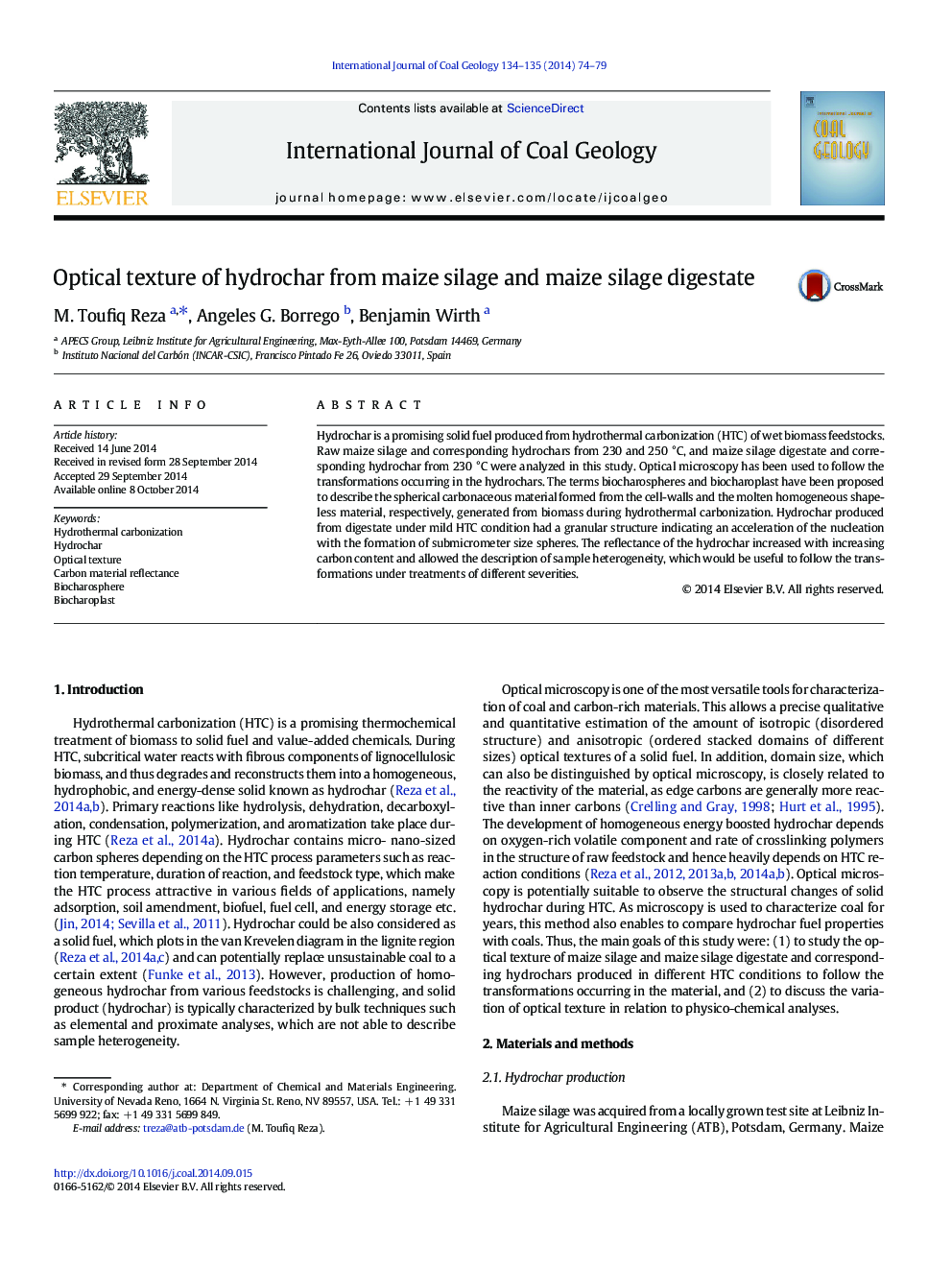| Article ID | Journal | Published Year | Pages | File Type |
|---|---|---|---|---|
| 1753140 | International Journal of Coal Geology | 2014 | 6 Pages |
•Optical microscopy has been applied for hydrochar characterization.•Optical structure of digestate is different than raw biomass and hydrochars.•The terms biocharosphere and biocharoplast are proposed for hydrochar description.•Reflectance of hydrochar constituents allows the transformation upon heating to be followed.
Hydrochar is a promising solid fuel produced from hydrothermal carbonization (HTC) of wet biomass feedstocks. Raw maize silage and corresponding hydrochars from 230 and 250 °C, and maize silage digestate and corresponding hydrochar from 230 °C were analyzed in this study. Optical microscopy has been used to follow the transformations occurring in the hydrochars. The terms biocharospheres and biocharoplast have been proposed to describe the spherical carbonaceous material formed from the cell-walls and the molten homogeneous shapeless material, respectively, generated from biomass during hydrothermal carbonization. Hydrochar produced from digestate under mild HTC condition had a granular structure indicating an acceleration of the nucleation with the formation of submicrometer size spheres. The reflectance of the hydrochar increased with increasing carbon content and allowed the description of sample heterogeneity, which would be useful to follow the transformations under treatments of different severities.
